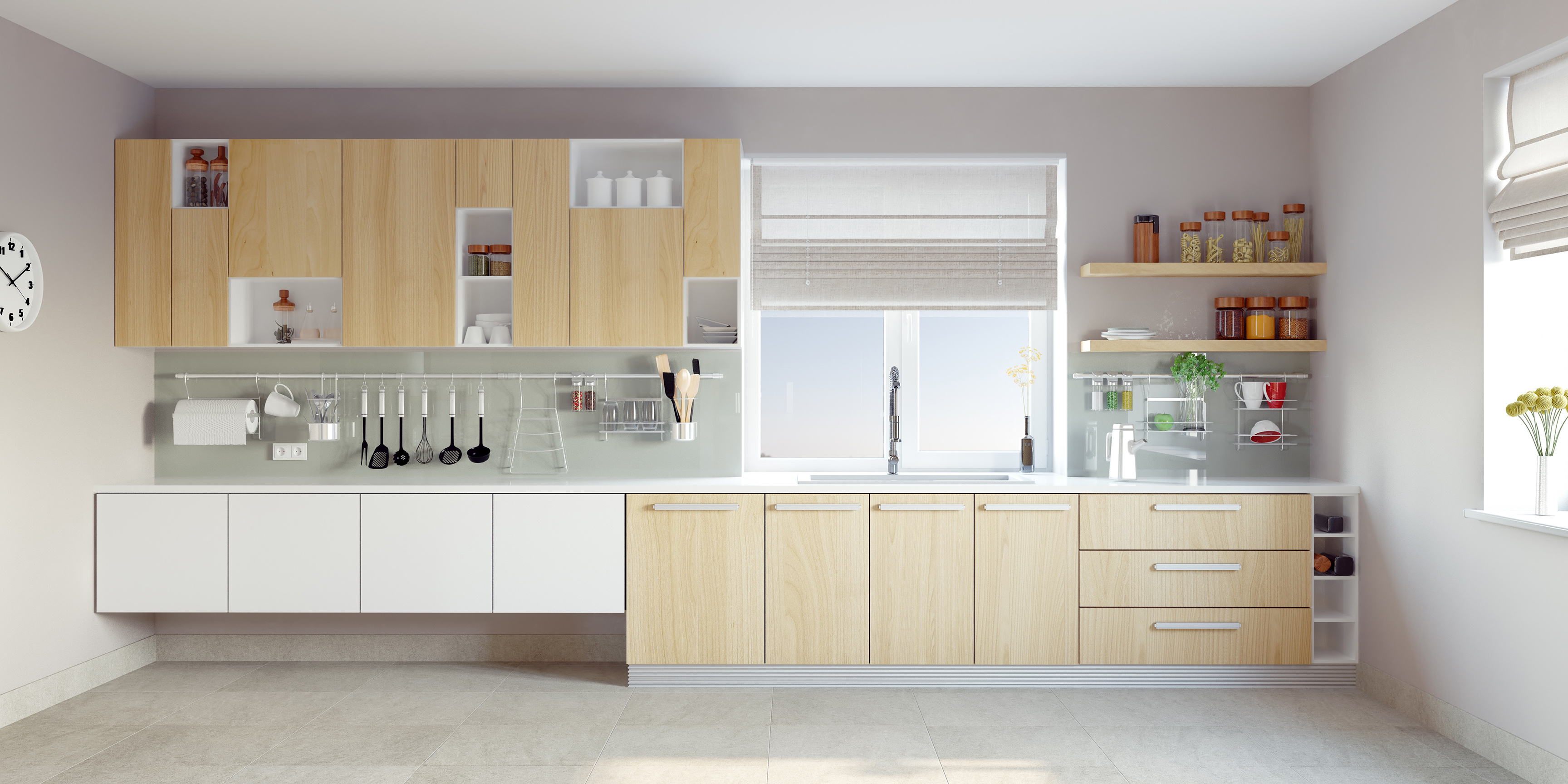Particle board began entering kitchen cabinetry in the early 1950s due to lumber shortages. Furniture makers found themselves looking for alternatives to plywood, but the new to-the-market engineered particle board was expensive and could only be obtained by the wealthy. Today, due to the combined efforts of larger machinery and state-of- the-art technology, efficient manufacturing processes have reduced the cost and raised the quality of particle board to a level of high regard in the woodworking industry.
Cabinets Quick uses high quality 90lb particle board with 100% pine core for our laminate and melamine panels. Particle board can be made at varying levels of quality and consistency, but Cabinets Quick only uses the highest quality boards available today. Complying with all state and federal safety and material standards, Cabinets Quick only produces CARB Phase 2 compliant products which contributes to better indoor air quality. All of our particle board panels begin as 100% recycled wood fiber collected from sawmills and other wood cutting trade sites. Truckloads of these wood chips, shavings and dust arrive at the manufacturing plant where they are separated and stored. When ready to use, large shaker systems remove contaminants from the wood material, and distribute the newly shaved and refined pieces appropriately. Wood fibers are sorted based on chip size: larger chips are used for core material while smaller, more compact chips are used on for outer layers to create a smooth void less surface. Quality control technicians inspect for appropriate size, humidity, and any contamination before moving to the next step.
After being properly sorted and all contaminants removed, materials are rotated in large heated tumblers and dried to low levels of moisture. Once the core material and surface material reaches as little as 2-3% and 6-7% respectively, the dried wood is blended with resins and additives. At this stage materials can be treated for specialty boards— such as fire rated, water resistant, and no added urea formaldehyde— depending on the different resins and additives being introduced.
The resin-coated wood material is then layered according to product specification and pressed by large rollers in a temperature controlled environment using a combination of pressure and heat. The boards are rotated and cooled before being sampled and inspected for quality assurance to check for proper strength and density as well as other specifications like consistency. To ensure product quality and safety the manufacturing process is governed and certified by strict standards set by various state, federal, and independent groups.
